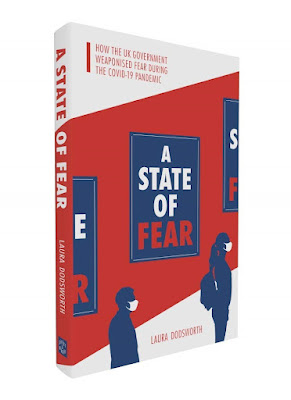Today marks the fifth anniversary of that fateful day when Boris Johnson announced to the country that the pubs would be completely closed until further notice due to the Covid-19 pandemic. I contemplated going down to my local for a last hurrah, but eventually decided against it. This ushered in sixteen months of either total closure or varying levels of ever-changing and often ludicrous restrictions, which were not fully lifted until Monday 19 July 2021. Even after this, for whatever reason, a handful of pubs persisted with the old regime, including, shamefully, the current holder of CAMRA’s National Pub of the Year Award.
Do you remember when you were only allowed to visit a pub if you consumed a “substantial meal”, although a Scotch egg or a hot Panini would suffice? Or when you were required to put on a mask if you had to stand up to go to the toilet? Or pubs were forced to operate table service, with all bar sales banned? Or when you had to provide your details for contract tracing, resulting in a surprising surge in visits by Isaac Hunt and Mr R. Sole? Or when all the pubs were forced to close at 10pm on the dot, resulting in a massive crush on public transport, making a mockery of social distancing? Or when different areas were allocated in “tiers” of restrictions, meaning that pubs could be closed on one side of a street and open (after a fashion) on the other? And how a minority of licensees seemed to demonstrate overzealous enthusiasm in enforcing this nonsense? In Scotland, there was even a period where you could have soft drinks inside the pub, but had to go outside if you wanted an alcoholic drink.

Pubs have now been allowed to trade normally for over three and a half years, and have recovered much of the lost ground, but still seem somehow subdued and diminished compared with how they were in 2019. The British Beer and Pub Association have stopped publishing their regular beer consumption statistics, but it would not surprise me if on-trade beer sales in 2024 were at least 20% lower than five years previously.
The phenomenon of queuing for service at the bar has become increasingly common, although this must have come from behaviour in shops as, apart from a brief period in the summer of 2020, pubs were never allowed to operate bar service. The trade in pubs often visibly thins out after 9 pm, while previously they would be buzzing until 11 or later. And the switch to working from home has only been partly reversed, damaging the business of many pubs in town and city centres. Many small breweries seemed to bide their time during the period of lockdown, only to discover that their businesses were no longer viable in the colder climate they emerged into, resulting in a wave of closures.
Of course this spread to the whole of society, not just the hospitality industry. So-called “non-essential” shops were closed, and benches and children’s play equipment in parks taped over. In Scotland, it was even proposed to saw the bottoms off school doors to promote ventilation, although I’m not sure whether this was ever actually done. We got our first taste of the reality of two-tier policing, when the contrast between the treatment of Black Lives matter demonstrations and anti-lockdown protests was only too evident, not to mention the heavy-handed response to a gathering to mark the murder of Sarah Everard, who had been killed by a serving police officer.
The panoply of regulations, at the same time absurd and oppressive, was seized upon by every obnoxious, jumped-up jobsworth in society who took delight in exercising power over others. The role of Covid Marshal seemed ideally auited to anyone who had missed a vocation as a PoW camp guard: the kind of people who during the Second World War were denounced as “little Hitlers”. It became a living demonstration of the truth of P. J. O’Rourke’s saying that “Authority has always attracted the lowest elements in the human race. All through history, mankind has been bullied by scum.” Pub licensees have always had a penchant for imposing petty rules, and sadly a small but significant minority saw lockdown restrictions as a golden opportunity to boss customers around.
A variety of sinister psychological techniques were used to promote public adherence to lockdowns, and howl down any criticism. This showed all too clearly how it is possible for a supposedly open and democratic society to acquiesce in totalitarianism. We became a society where people gleefully shopped their neighbours to the authorities and decried anyone daring to step out of line as “Covidiots”. This was chronicled in Laura Dodsworth’s coruscating book A State of Fear, which was published as early as May 2021.
The crisis wasn’t something that appeared and then blew over. Its impact is still with us in many ways today, as US beer writer Jeff Alworth explores in this blogpost, in which he draws a connection between the effect on the brewing and hospitality industry and wider society. It’s an interesting an thoughtful piece which is well worth reading, although I certainly don’t agree with all his conclusions.
It is important to point out that Covid and lockdown are different things. Covid is a disease, but the response to it, and how severe and long-lasting it would be, was a political choice. Lockdown was not an ineluctable consequence of Covid. Jeff in effect recognises this when he says “Blue states, where shutdowns were more common and durable, seem to be in worse shape.” Lockdown was not a single, indivisible concept; it was a deliberate choice from a range of policy options.
School closures, imperfectly and patchily substituted by online learning, have left many pupils really struggling and well behind with their education. Pausing a wide range of medical services has hugely increased NHS waiting lists and left many people with serious conditions still untreated. The social isolation of lockdown has carried on into the following years, reducing social contact and leaving people more lonely, often resulting in mental health problems. The costs associated with business support and furlough payments, and the reduction in tax revenues from reduced economic activity, have created a mountain of debt that continues to hang over the entire economy. All of these factors have combined to produce a far greater feeling of political alienation.
Jeff says “I personally offer blanket immunity to any public officials who made decisions in good faith with limited info—they were given impossible choices,” but I would strongly disagree. This may have been excusable in the very early weeks, when there was a general sense of confusion and lack of clarity over what was happening, but it wasn’t too long before the disastrous long-term consequences of lockdown had become all too clear. Many respected commentators were saying this at the time, so the argument that “we were doing the best we could with the knowledge we had at the time” does not wash. The cartoon below was published in early May 2020, less than two months in.
And this one entitled “The Second Wave”, although later, makes the point even more strongly.
It was often suggested at the time that there was a trade-off between saving lives and saving the economy, but except in a very short-term sense this is a false dichotomy. Without a healthy economy, in the longer term public health will suffer. And there was no clear correlation between the length and severity of lockdowns and public health outcomes. Sweden was the only major European nation not to have any kind of formal lockdown, but its results were somewhere in the middle of the scale, some better, some worse. And Peru, which had one of the strictest lockdowns in the world, also had one of the highest death rates. (I am not suggesting that there is a reverse correlation either, just that there is no clear link either way).
The fact remains that, five years after the start of lockdown, the Covid crisis has had profound, long-lasting and damaging implications across the whole of society. Yet people seem all too willing to memory-hole it, as it is just too uncomfortable to address. This goes far beyond the hospitality industry. As a society we are poorer, sicker, less well educated, and more isolated and more divided than we otherwise would have been. And most of that was a political choice.


















